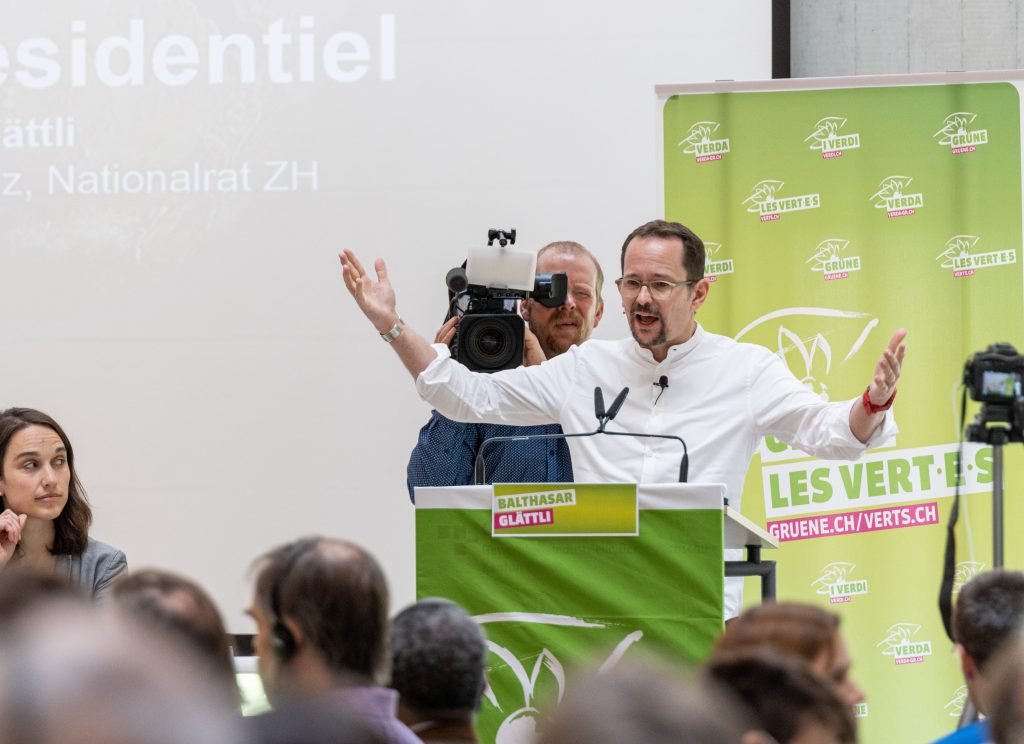Mr Seitz, what about the Greens?
Werner Seitz, Redaktion DeFacto
1st November 2023

The Greens were the winners of the 2019 federal elections. Four years later, they have suffered significant losses. What are the reasons for this? Werner Seitz, who analyses the development of the Greens in Switzerland since their emergence, provides some context.
How did the Greens evolve in Switzerland?
Werner Seitz: The history of the Greens is a turbulent one with fractures. Even at the time of its founding in 1983, activists from the environmental, peace and international solidarity movements were unable to agree on a common national project. Initially, two formations were formed: the so-called moderate Greens and the alternative Greens. In the course of time, the alternative Greens joined the moderate Green Party of Switzerland. This broadened the party’s thematic scope and positioned it more to the left. In 2004, a wing split off from the Greens in the canton of Zurich; in 2007, this wing, together with some newly formed groups, founded the Green Liberal Party, which partly competed with the Greens and the SP.
In the elections, too, the Greens repeatedly went through wave troughs. Depending on the current state of the issues, they were clearly on the winning or on the losing side. They won strikingly in the 1980s, the 2000s and in 2019, when environmental and climate issues were high on the political agenda. In between, they also came out as losers in elections, as they did just now. In 2023, social and migration issues were at the top of the political agenda. Despite the ups and downs in the elections, the Greens have been able to continuously increase their party strength over the past forty years; currently it is just under ten percent.
Did the “climate stickers” play a role in the Greens’ recent losses of over three percentage points?
We may find out when the scientific follow-up survey “Selects” is available. For me, the main reason for the Greens’ losses is the change in the thematic conjuncture.
What does the electorate of the Greens look like?
Characteristic of Green voters is their above-average level of education. They mostly belong to the new middle class and are mainly active in education, health and social services, media or culture. They are also called “socio-cultural specialists”. They represent socio-politically progressive values such as cultural openness, social liberalisation, quality of life, equality or sustainable lifestyles. Incidentally, these characteristics and values also largely apply to SP voters. In terms of age, the Greens are supported to an above-average extent by younger people, but older people also vote Green. From the beginning, the Greens and their voters have been predominantly female.
The SP is the biggest competitor of the Greens in elections. Why don’t the two parties join forces?
The SP and the Greens are very close in terms of their programmes, namely in the policy fields of equality, ecology or migration and integration, and they both appeal mainly to the new middle class. So they fish in the same pond.
Thus, the SP and the Greens were in a certain competition with each other early on – also based on the division of labour. This has proved successful, as the left camp has managed to hold on to around thirty percent of the vote over the past decades. Political scientist Silja Häusermann speaks of a “differentiation process of the left camp”. Depending on the current state of the issues, there were strong movements of votes between the two parties, whereby the different attribution of competences played a significant role. The Greens are considered more competent in questions of environmental policy, the SP above all in questions of social policy and, somewhat less pronounced, in European and migration policy.
Politicking in separate organisations thus makes perfect sense. Moreover, there are differences between the Greens and the SP: these are rooted in the different histories that still characterise the two parties today, or in the different attitudes to technology and growth. For the SP, the latter two play an important role in improving living conditions, while the Greens are always sceptical about rational approaches.
And when will the Greens become a Federal Councillor?
The Greens have run for the Federal Council several times since the 1980s; however, these were “instrumental” candidacies. For example, the Greens wanted to draw attention to the under-representation of women or to protest against the SVP in the Federal Council. The first serious candidacy was in 2019 with Regula Rytz. And there it became clear: there is no constitutional or statutory right for a party to be represented in the Federal Council. Only the majority in the Federal Assembly determines the composition. The Greens must therefore use a clever strategy to organise a majority in the Federal Assembly for their claim to a seat in the Federal Council.
Werner Seitz headed the “Politics, Culture, Media” section at the Federal Statistical Office for over twenty years. He wrote several works on political culture, the history of political divides in Switzerland, representation and equality of women, and the Greens. In May 2023, the anthology “Die Grünen in der Schweiz. Entwicklung, Wirken, Perspektiven“, which he edited together with Sarah Bütikofer.
Bild: flickr.com
